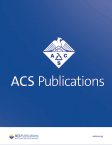Statistical Scaling in Localization-Induced Failures
IF 3.4
Q2 PUBLIC, ENVIRONMENTAL & OCCUPATIONAL HEALTH
引用次数: 0
Abstract
Investigation of statistical scaling in localization-induced failures dates back to da Vinci's speculation on the length effect on the rope strength in 1500s. The early mathematical description of statistical scaling stems from the birth of the extreme value statistics. The most commonly known mathematical model for statistical scaling is the Weibull size effect, a direct consequence of the infinite weakest-link model. However, abundant experimental observations on different localization-induced failures showed that the Weibull size effect is inadequate. Over the last two decades, two mathematical models were developed to describe the statistical size effect on localization-induced failures. One is the finite weakest-link model, in which the random structural resistance is expressed as the minimum of a set of discrete independent random variables, and the other is the level excursion model, a continuum description of the finite weakest-link model, in which the structural failure probability is calculated as the probability of the upcrossing of a random field over a barrier. This paper reviews the mathematical formulation of these two models, and their applications to various engineering problems including the strength distributions of quasibrittle structures, failure statistics of micro-electro-mechanical systems (MEMS) devices, breakdown statistics of highk gate dielectrics, and probability distribution of buckling pressure of spherical shells containing random geometric imperfections. The implications of statistical scaling for the stochastic finite element simulations and the reliability-based structural design are discussed. In particular, the recent development of the size-dependent safety factors is reviewed.定位诱发故障的统计扩展
对局部失效中的统计缩放的研究可以追溯到 15 世纪达芬奇对绳索强度的长度效应的推测。统计缩放的早期数学描述源于极值统计的诞生。最常见的统计缩放数学模型是威布尔尺寸效应,它是无限弱链接模型的直接结果。然而,对不同局部失效的大量实验观察表明,威布尔尺寸效应并不充分。在过去的二十年里,人们建立了两个数学模型来描述局部失效的统计尺寸效应。一种是有限弱链接模型,其中随机结构阻力表示为一组离散独立随机变量的最小值;另一种是水平偏移模型,它是有限弱链接模型的连续描述,其中结构破坏概率计算为随机场越过障碍物的概率。本文回顾了这两个模型的数学表述,以及它们在各种工程问题中的应用,包括准脆性结构的强度分布、微机电系统(MEMS)设备的失效统计、高栅极电介质的击穿统计,以及含有随机几何缺陷的球壳屈曲压力的概率分布。讨论了统计比例对随机有限元模拟和基于可靠性的结构设计的影响。特别是回顾了与尺寸有关的安全系数的最新发展。
本文章由计算机程序翻译,如有差异,请以英文原文为准。
求助全文
约1分钟内获得全文
求助全文
来源期刊

ACS Chemical Health & Safety
PUBLIC, ENVIRONMENTAL & OCCUPATIONAL HEALTH-
CiteScore
3.10
自引率
20.00%
发文量
63
期刊介绍:
The Journal of Chemical Health and Safety focuses on news, information, and ideas relating to issues and advances in chemical health and safety. The Journal of Chemical Health and Safety covers up-to-the minute, in-depth views of safety issues ranging from OSHA and EPA regulations to the safe handling of hazardous waste, from the latest innovations in effective chemical hygiene practices to the courts'' most recent rulings on safety-related lawsuits. The Journal of Chemical Health and Safety presents real-world information that health, safety and environmental professionals and others responsible for the safety of their workplaces can put to use right away, identifying potential and developing safety concerns before they do real harm.
 求助内容:
求助内容: 应助结果提醒方式:
应助结果提醒方式:


